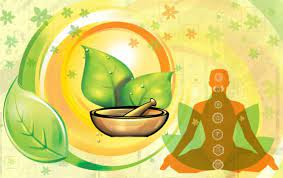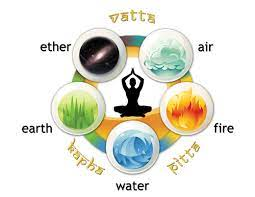Ayurveda Role in Daily life
Uncategorized Uncategorized
Ayurveda Role in Daily life
Ayurveda is an ancient system of medicine that originated in India over 5,000 years ago. The word “Ayurveda” is derived from the Sanskrit words “Ayus,” meaning life, and “Veda,” meaning knowledge or science. Therefore, Ayurveda can be translated as the “science of life” or the “knowledge of life.”
The primary goal of Ayurveda is to promote good health and well-being through a holistic approach that encompasses the body, mind, and spirit. It is based on the belief that the balance of three fundamental energies, or doshas, known as Vatta, Pitta, and Kapha, is crucial for maintaining health. These doshas are present in every person but in different proportions, and an imbalance can lead to illness.
Ayurvedic practitioners use a combination of dietary guidelines, herbal remedies, yoga, meditation, and lifestyle recommendations to restore and maintain balance in the doshas. The approach is personalized, taking into consideration an individual’s unique constitution, known as Prakriti, and any current imbalances, known as Vikriti.
1. Doshas: The three doshas, Vata, Pitta, and Kapha, are the dynamic forces that govern physiological and psychological functions in the body. Each person has a unique combination of these doshas.
2. Prakriti and Vikriti: Prakriti refers to an individual’s inherent constitution, while Vikriti refers to the current state of imbalance or disease.
3. Diet and Nutrition: Ayurveda emphasizes the importance of a balanced and appropriate diet based on an individual’s dosha constitution.
4. Herbal Medicine: Ayurvedic practitioners use a wide range of herbs and plant-based remedies to treat various health conditions and restore balance.
5. Yoga and Meditation: Physical exercises, yoga postures, and meditation are integral parts of Ayurveda, helping to balance the doshas and promote overall well-being.
6. Lifestyle Recommendations: Ayurveda provides guidelines for daily and seasonal routines, sleep, and other lifestyle factors to maintain health and prevent illness.
While Ayurveda has a long history and is still practiced in some traditional forms, it’s important to note that not all aspects of Ayurvedic medicine have been scientifically validated, and caution should be exercised, especially when considering alternative treatments. It’s advisable to consult with a qualified healthcare professional before making significant health decisions.
Basic principles of Ayurveda

1. Pancha Mahabhutas (Five Elements): Ayurveda recognizes that everything in the universe, including the human body, is composed of five basic elements –
Ether (Akasha),
Air (Vayu),
Fire (Agni),
Water (Jala), and
Earth (Prithvi
Diagnosis Methods
Ayurveda employs a combination of diagnostic methods to assess an individual’s constitution (Prakriti), current imbalances (Vikriti), and overall health. These methods are holistic and take into account various aspects of an individual’s physical, mental, and emotional well-being. Here are some common diagnostic methods used in Ayurveda:
1. Pulse Diagnosis (Nadi Pariksha): Ayurvedic practitioners often use pulse diagnosis to assess the balance of the doshas, the state of various organs, and overall vitality. Different pulses at the radial artery are examined for qualities corresponding to the three doshas (Vata, Pitta, and Kapha).
2. Tongue Examination (Jihva Pariksha): The tongue is examined for various signs, such as color, coating, and shape, which can provide insights into the balance of doshas and the state of digestion.
3. Observation (Darshan): Ayurvedic practitioners observe physical characteristics, such as body build, skin color, hair, nails, and overall demeanor, to identify patterns and imbalances associated with the doshas.
4. Interrogation (Prashna): Ayurvedic practitioners ask detailed questions about an individual’s lifestyle, daily routine, diet, sleep patterns, and emotional well-being. This helps in understanding the individual’s habits and identifying potential sources of imbalance.
5. Examination of Vital Signs: Ayurveda considers the examination of vital signs such as body temperature, heart rate, respiratory rate, and blood pressure as part of the diagnostic process.
6. Constitutional Analysis (Prakriti Pariksha): Understanding an individual’s inherent constitution (Prakriti) is a fundamental aspect of Ayurvedic diagnosis. This is often determined through a combination of questioning, observation, and sometimes, specific assessment tools.
7. Dosha Assessment: Ayurvedic practitioners assess the current state of the doshas (Vikriti) to identify imbalances. This involves evaluating symptoms, lifestyle factors, and other diagnostic methods to understand which doshas may be elevated or diminished.
8. Review of Medical History: A thorough review of an individual’s medical history, including past illnesses, family history, and any current health concerns, is an essential part of Ayurvedic diagnosis.
9. Examination of Digestive Function (Agni Pariksha): The strength of the digestive fire (agni) is crucial in Ayurveda. Practitioners assess digestion and metabolism by inquiring about appetite, bowel habits, and other digestive functions.
10. Laboratory Tests (Optional): In some cases, Ayurvedic practitioners may recommend modern laboratory tests to complement their traditional diagnostic methods. These tests can include blood tests, urine analysis, and other diagnostic tools to gather additional information.
Ayurvedic diagnosis is a comprehensive process that considers multiple aspects of an individual’s life. The goal is to identify the root causes of imbalances and tailor a holistic treatment plan that includes dietary and lifestyle recommendations, herbal remedies, and therapeutic practices to restore balance and promote overall well-being. Consulting with a qualified Ayurvedic practitioner is recommended for a personalized and accurate assessment.
Ayurvedic Treatment
Ayurvedic treatment is a holistic approach that aims to restore balance to the body, mind, and spirit. It focuses on addressing the root causes of imbalances rather than just treating symptoms. Ayurvedic treatments include a combination of lifestyle modifications, dietary changes, herbal remedies, detoxification procedures, and therapeutic practices. Here are some common elements of Ayurvedic treatment:-
1. Dietary Guidelines (Ahara): Ayurveda places a strong emphasis on the role of diet in maintaining health and treating imbalances. Dietary recommendations are personalized based on an individual’s constitution (Prakriti) and current imbalances (Vikriti). Foods are categorized according to their tastes (rasa) and qualities (guna), and individuals are advised to favor foods that balance their specific dosha.
2. Lifestyle Modifications (Vihara): Ayurvedic treatment includes recommendations for daily routines and lifestyle practices to align with the natural rhythms of the body and the seasons. This may involve guidance on sleep patterns, exercise, stress management, and other daily activities.
3. Herbal Remedies (Aushadha): Ayurvedic practitioners prescribe herbal formulations to address specific imbalances. These formulations often consist of a combination of herbs chosen for their properties to pacify or balance particular doshas. Herbs can be administered in various forms, including powders, tablets, decoctions, and medicated oils.
4. Yoga and Meditation (Dhyana): The practice of yoga and meditation is integral to Ayurvedic treatment. These practices help to balance the mind, reduce stress, and promote overall well-being. Specific yoga asanas and meditation techniques may be recommended based on an individual’s constitution and imbalances.
5. Detoxification (Panchakarma): Panchakarma is a set of therapeutic procedures designed to eliminate toxins (ama) from the body. It includes treatments such as oil massage (Abhyanga), therapeutic vomiting (Vamana), purgation (Virechana), enema (Basti), and nasal administration of medicated oils (Nasya). Panchakarma is typically performed under the guidance of a trained Ayurvedic practitioner.
6. Ayurvedic Massage and Body Therapies (Snehana and Swedana): These therapies involve the application of medicated oils and herbal preparations to the body, followed by steam therapy. They help to improve circulation, promote relaxation, and eliminate toxins.
7. Pranayama (Breath Control): Breathing exercises, or pranayama, are often recommended to balance the flow of prana (life force) in the body. Different pranayama techniques may be prescribed based on an individual’s dosha and imbalances.
8. Sound Therapy (Nada Chikitsa): Ayurveda recognizes the therapeutic effects of sound on the body and mind. Practices such as listening to calming music or chanting specific mantras may be recommended.
9. Gem and Mineral Therapy (Ratna Chikitsa): Certain gemstones and minerals are believed to have therapeutic properties in Ayurveda. They may be used in various forms, such as wearing specific gemstone jewelry or using gem-infused oils.
10. Counseling and Lifestyle Coaching: Ayurvedic practitioners may offer guidance on stress management, emotional well-being, and lifestyle choices to support overall health.
It’s important to note that Ayurvedic treatment is highly individualized, and recommendations can vary based on an individual’s unique constitution, imbalances, and specific health goals. Consulting with a qualified Ayurvedic practitioner is crucial for a personalized and effective treatment plan.
Preventions
1. Dinacharya (Daily Routine): Following a daily routine that aligns with natural circadian rhythms is considered essential for preventing imbalances. This includes waking up early, practicing personal hygiene, engaging in regular exercise or yoga, and going to bed at a consistent time.
2. Ritucharya (Seasonal Routine): Ayurveda recognizes the impact of seasonal changes on the body and mind. Adapting lifestyle practices, diet, and routines according to the seasons helps maintain balance and prevent seasonal imbalances.
3. Sattvic Diet: Ayurveda recommends a sattvic (pure and wholesome) diet that includes fresh, seasonal, and locally sourced foods. Eating a variety of foods with all six tastes (sweet, sour, salty, bitter, pungent, and astringent) helps maintain balance among the doshas.
4. Moderation (Mitahara): Consuming food in moderate quantities is emphasized in Ayurveda. Overeating or extreme dietary habits can disrupt digestion and lead to imbalances.
5. Hygiene (Swachhata): Maintaining personal and environmental cleanliness is crucial for preventing the accumulation of toxins (ama) in the body. This includes practices such as regular bathing, oral hygiene, and keeping living spaces clean.
6. Physical Exercise (Vyayama): Regular physical activity is important for maintaining a healthy body and mind. Ayurveda recommends exercise that is suitable for an individual’s constitution and includes practices such as yoga, walking, and moderate aerobic activities.
7. Stress Management (Pranayama and Meditation): Chronic stress is considered a significant factor in the development of diseases in Ayurveda. Practices such as pranayama (breath control) and meditation help manage stress and promote mental well-being.
8. Balancing the Doshas: Understanding one’s constitution (Prakriti) and imbalances (Vikriti) and making lifestyle choices that balance the doshas contribute to preventive health. This may involve dietary modifications, lifestyle adjustments, and incorporating practices that pacify specific doshas.
9. Regular Detoxification: Ayurveda emphasizes periodic detoxification to eliminate accumulated toxins (ama) from the body. This may involve practices such as Panchakarma therapies performed under the guidance of a qualified Ayurvedic practitioner.

Ms. Pooja
Assistant Professor
Geeta Institute of Pharmacy, Geeta University
Related Posts

What is data security? | Why is data security important? | Types of Data Protection
What is data security? | Why is data security important? | Types of Data Protection Definition Data security refers to the practice of protecting digital information from unauthorized access, alteration, or disclosure, ensuring its confidentiality, integrity, and availability. It involves

The Male Hormone Journey: Navigating Andropause
What is Andropause? The term “andropause” is often used interchangeably with the term “menopause,” which refers to the hormonal changes that occur as men age. However, doctors are still divided as to whether men really go through a “man version”
Photonic Computing for Faster AI Training: The Future of Computing
As Artificial Intelligence (AI) continues to revolutionize industries, the need for faster, more efficient computing methods has become critical. Photonic computing, which leverages light instead of electrical signals to process information, is emerging as a promising solution to speed up


